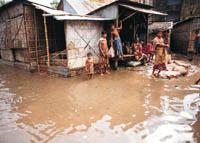Rains can serve to predict the Child
At the moment there is neither El Niño nor La Niña, nor is there any precise information about when they will resume. The two climatic phenomena are, at least, well known, but from a scientific point of view there is still much to fully understand. And predicting when they will occur is not easy either.

The NASA Goddard Space Flight Center and the University of Maryland investigated the rains that occurred in the Indian Ocean in the last 21 years, seeking the way to predict the Child. They have obtained, compared and related to the occurrence of the phenomenon of El Niño data on rain (volume, intensity, etc.) He died day by day and month. Based on the information collected, they have developed a useful index to identify and define interannual climate changes, which allows predicting El Niño very violent.
Dismissed factor
Atmospheric currents and sea water temperature are the usual tools to predict phenomena such as the Child. According to how they change, experts conclude whether or not El Niño begins. Rain and changes in rains have so far been considered a secondary factor and have not been used to make predictions. Scott Curtis, of the University of Maryland, believes the rain has been less important than enough. In fact, "the precipitation changes brought by El Niño are very important to know how heat is distributed in the atmosphere and, in short, the distribution of heat is the one that guides the circulation of atmospheric currents and acts on the climate of the whole world", he said.
The results of the research seem to confirm the words of Curtis. In the years 1982-83 and 1997-98 the pattern of rains in the violent El Niño began to change two months before the rest of factors, before the temperature of the sea and the wind currents. Thus, by spying on the rains, the hardest Children can predict before now. On the other hand, the researchers highlighted that their procedure is only valid for the violent El Niño, since when the Child is weak or occurs in La Niña, the rain pattern of the Indian Ocean does not change in advance.
Published in the newspaper
Buletina
Bidali zure helbide elektronikoa eta jaso asteroko buletina zure sarrera-ontzian











